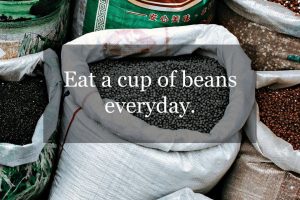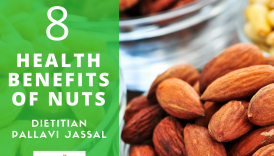Exploring the Link Between Beans and Longevity in Blue Zones

Overview of Blue Zones
Blue Zones refer to five distinct regions around the globe where people enjoy remarkably long lives, often surpassing the age of 100. These locations—Okinawa in Japan, Sardinia in Italy, Nicoya Peninsula in Costa Rica, Ikaria in Greece, and Loma Linda in California—are home to communities that not only thrive but do so with a lower incidence of lifestyle-related diseases. One fascinating aspect of these regions is the lifestyle patterns observed among their inhabitants. They share some common factors, including:
- Exploring the Link Between Beans and Longevity in Blue Zones
- Overview of Blue Zones
- Importance of Longevity Research
- The Role of Beans in Blue Zones
- Traditional Bean-Based Diets
- Nutritional Benefits of Beans
- Blue Zones Lifestyle Factors
- Plant-Based Diet
- Regular Physical Activity
- Studies on Beans and Longevity
- Research Findings in Blue Zones
- Impact of Bean Consumption on Health
- Recipes from Blue Zones
- Bean-Centric Dishes
- Incorporating Beans into Your Diet
- Conclusion
- Summary of Key Findings
- Recommendations for Longevity through Bean Consumption
- Dietary habits: Predominantly plant-based, with a significant emphasis on beans.
- Social connections: Strong relationships with family and friends.
- Physical activity: Regular and natural forms of exercise are integrated into their daily lives.
The lifestyles of these populations offer valuable insights into health and wellness that extend beyond basic nutrition.
Importance of Longevity Research
Understanding the ingredients of longevity is crucial, especially as life expectancy continues to rise globally. Longevity research not only reveals the secrets behind these long-lived communities but also provides practical tools and strategies for extending healthspan—the period of life spent in good health. Here are some compelling reasons why longevity research matters:
- Preventive health: It encourages proactive measures over reactive treatments.
- Quality of life: Research can inform practices that enhance well-being.
- Public health policies: Findings could guide policies aimed at improving societal health.
Incorporating insights from Blue Zones, researchers have begun to advocate for a holistic approach to health, emphasizing that small lifestyle changes could yield significant benefits for individuals and communities alike. This exploration of longevity is an invitation for us to rethink our daily choices and ultimately lead healthier, more fulfilling lives.
The Role of Beans in Blue Zones
Traditional Bean-Based Diets
Beans are a cornerstone of the diets found in Blue Zones, where they are not just a source of sustenance but a vital ingredient in the cultural fabric of these regions. For example, in Sardinia, local families often gather around bowls of fagioli, a hearty bean stew. Similarly, in Okinawa, the diet is rich in various types of legumes. These traditional bean-based diets highlight the importance of simplicity and community in mealtime rituals. Here’s a glimpse at how beans are typically incorporated into Blue Zone diets:
- Every meal feature: Beans are often included in breakfast, lunch, and dinner.
- Variety of beans: From black beans and lentils to chickpeas and adzuki beans, the diversity is astounding.
- Culinary traditions: Local cooking methods and recipes are passed down through generations, making beans a staple food imbued with cultural significance.
Nutritional Benefits of Beans
Beans are not just admired for their taste and tradition; they also pack a nutritional punch that contributes to longevity. Consider the following benefits associated with regular bean consumption:
- Rich in protein: Beans provide an excellent plant-based protein source, essential for maintaining muscle mass as we age.
- High in fiber: Their fiber content aids digestion, helping prevent issues like constipation and promoting gut health.
- Low in fat: Beans are low in saturated fat, making them heart-healthy options that can help reduce cholesterol levels.
- Nutrient-dense: They are loaded with vitamins and minerals such as iron, potassium, and magnesium.
Transitioning to a diet that includes more beans can seem daunting, but even small changes can yield significant health benefits. Incorporating beans into meals may not only enhance flavor but also support a healthier, longer life—just as seen in the Blue Zones.
Blue Zones Lifestyle Factors
Plant-Based Diet
In the examination of Blue Zones, one of the most striking commonalities is their reliance on a plant-based diet. While the specifics may vary from one region to another, the foundation remains the same: a strong emphasis on fruits, vegetables, whole grains, and legumes, particularly beans. For instance, in the Ikaria region, people enjoy a vibrant Mediterranean diet that includes an array of greens, fresh herbs, and legumes, much of which is grown right in their backyards. This reliance on plants not only contributes to better health but also fosters a sense of community and connection to the land. Here are some key aspects of their plant-based diets:
- Seasonal eating: Ingredients are often fresh and local, emphasizing sustainability.
- Natural flavoring: Meals are generally seasoned with herbs and spices instead of relying on processed products.
- Culinary methods: Cooking methods reflect a focus on health, such as grilling, baking, or steaming rather than frying.
Regular Physical Activity
Another defining factor of Blue Zone lifestyles is the high level of physical activity integrated into daily routines. Unlike many modern approaches to fitness, people in these areas do not typically engage in structured workouts; instead, they lead active lives through natural movement. Consider the inhabitants of Loma Linda, who often engage in gardening, walking, and community activities that keep them moving without feeling like a chore. Key elements of their physical activity include:
- Natural movement: Regular activities such as walking, cycling, and gardening are favored over gym workouts.
- Social exercise: Many of these activities are communal, promoting social bonds while enhancing physical well-being.
- Daily routines: Physical activity is woven into the fabric of everyday life—such as climbing stairs or doing housework.
These two lifestyle factors—plant-based diets and regular physical activity—are clearly interlinked, forming a robust foundation for health and well-being in Blue Zones. By adopting elements of these practices, anyone can take a step toward a healthier lifestyle that promotes longevity.
Studies on Beans and Longevity
Research Findings in Blue Zones
Numerous studies have examined the intriguing connection between bean consumption and longevity, particularly in Blue Zones. Researchers have found that communities where beans are a dietary staple tend to have a significantly higher number of centenarians compared to other regions. One study focusing on the Nicoya Peninsula revealed that individuals who consumed beans daily had better health outcomes and a lower risk of developing chronic diseases. Some key research findings include:
- Higher life expectancy: Inhabitants of Blue Zones with regular bean consumption often live five to ten years longer.
- Lower mortality rates: They experience decreased mortality from conditions like heart disease, stroke, and certain cancers.
- Cognitive health: Bean eaters show improved cognitive function, particularly important as they age.
These insights make it clear that beans contribute positively to the overall health of these long-lived populations.
Impact of Bean Consumption on Health
The impact of bean consumption on health is profound, offering a myriad of benefits that extend beyond simple nourishment. Beans are rich in fiber, which is not only conducive to gut health but also stabilizes blood sugar levels, aiding in the prevention of type 2 diabetes. Some compelling health benefits of beans include:
- Heart health: Their high fiber and low saturated fat content contribute to improved cardiovascular health.
- Weight management: Beans are satiating, helping to regulate appetite and reduce overall caloric intake.
- Nutrient-rich: They are packed with antioxidants, vitamins, and minerals essential for maintaining robust health.
In conclusion, the distinct lifestyle and dietary patterns of Blue Zones provide a blueprint for longevity, with beans playing a starring role in promoting long, healthy lives. Understandably, those looking to boost their health can look to these findings as inspiration, integrating beans into their diets for a path toward enhanced well-being.
Recipes from Blue Zones
Bean-Centric Dishes
After exploring the significance of beans in the Blue Zones, it’s time to bring those flavors into your kitchen! Bean-centric dishes from these regions not only celebrate their rich nutritional profile but also highlight the traditions and cultures from which they originate. Here are a couple of simple yet delicious recipes that embody the essence of Blue Zone cooking:
- Sardinian Bean Stew:
- Ingredients: Cannellini beans, tomatoes, garlic, rosemary, and olive oil.
- Method: Sauté garlic in olive oil, add tomatoes, and let them simmer. Stir in pre-cooked cannellini beans, season with rosemary, and simmer together until flavors meld. Serve with crusty whole grain bread.
- Okinawan Sweet Potato and Black Bean Salad:
- Ingredients: Sweet potatoes, black beans, green onions, lime juice, and sesame oil.
- Method: Boil sweet potatoes until tender, then cube them. Toss with black beans, sliced green onions, a drizzle of lime juice, and sesame oil for a refreshing salad that’s packed with nutrition.
Incorporating Beans into Your Diet
Integrating beans into your daily meals can be easier than it sounds. Here are some tips to help you make beans a regular part of your diet:
- Start simple: Add canned beans to salads, soups, or pasta dishes for an instant nutrient boost without a lot of extra effort.
- Make bean dips: Puree cooked beans with garlic, lemon juice, and herbs to create delicious dips or spreads for snacks.
- Snack smart: Choose roasted chickpeas or black bean-based chips for a healthy, satisfying snack.
- Substitute meat: Use beans as a meat substitute in everything from tacos to burgers for a plant-based twist.
By incorporating these bean-centric dishes and tips into your routine, you not only pay homage to the traditions of Blue Zones but also take significant steps toward enhancing your health. Whether it’s a stew or a refreshing salad, beans can easily make their way into your meals, bringing with them a wealth of benefits!
Conclusion
Summary of Key Findings
As we reflect on the impact of beans in the diets of Blue Zones, several key findings emerge. Research reveals that communities with high bean consumption not only enjoy extended lifespans but also experience improved overall health. Key aspects to consider:
- Diet Quality: Beans are a fundamental part of a plant-based diet that emphasizes whole, natural foods.
- Nutritional Powerhouse: They provide essential nutrients such as protein, fiber, vitamins, and minerals that contribute to various health benefits, including heart health and stable blood sugar levels.
- Cultural Significance: Traditional recipes and the communal aspect of bean consumption in Blue Zones highlight the role of food in uniting people and promoting well-being.
Overall, adopting bean-centric dietary habits can be a boon for anyone looking to enhance their health and longevity.
Recommendations for Longevity through Bean Consumption
To make the most of the benefits that beans have to offer, here are some actionable recommendations:
- Incorporate beans into every meal: Start small by adding beans to salads, soups, or grain bowls. Try to aim for at least a serving of beans per day.
- Explore various bean varieties: From kidney beans to lentils, explore the rich array of beans available. Each type offers unique flavors and nutrients.
- Experiment with recipes: Try new bean-centric dishes regularly to keep your meals exciting. Use traditions from Blue Zones as inspiration, but feel free to get creative!
- Join a cooking group: Consider local culinary classes or recipe shares that emphasize plant-based cooking for community support and inspiration.
Ultimately, embracing bean consumption not only aligns with the practices observed in Blue Zones but also fosters a healthier lifestyle. With these simple and enjoyable approaches, anyone can step toward longevity and vitality through the power of beans!





